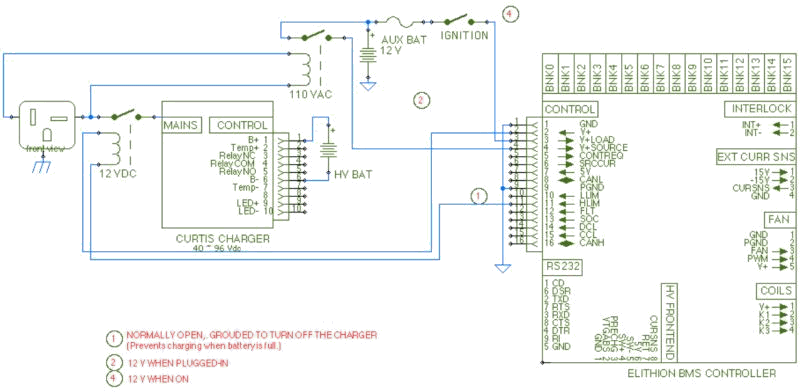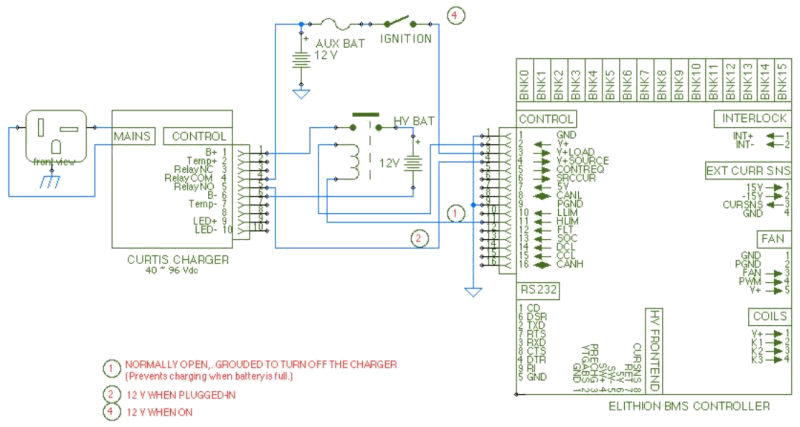
Lithiumate™ Manual |
|
index Curtis 1621 charger Using a Curtis charger with a Lithiumate BMS. 
Curtis chargers are a version of the DeltaQ charger, but well specified and better documented. This charger does not have a provision for on/off control, so it must be switched with a relay on either the input or the output. This charger does have an isolated relay that is energized whenever it receives AC power. This is useful for powering the BMS and controlling an inyterlock function that prevents driving off while still plugged in. However, this becomes useless if the charger is controlled through an AC relay on its AC input, as turning off the AC will turn off the isolated relay in the charger. Therefore, there are 2 approaches to using the Curtis charger:
In this approach, the charger is controlled by switching its AC input. The relay inside the charger is useless, so a different way of detecting AC power is required. The advantage of this approach is that AC relays are easier to find and use. 
Controlling charging with a AC relay on the charger's input In this approach, the charger is controlled by switching its DC output. The relay inside the charger is useful for detecting AC power. The advantage of this approach is that it requires only one relay. The disadvantage is that that relay must be rated for DC operation, which is harder to source. Also, it's never a good idea to place the switching between the charger output and the battery. 
Controlling charging with a DC relay on the charger's output | ||
© 2008~2025 Elithion™, LLC. All rights reserved, except where noted by CC mark. Page published on May 07 2024.
The Elithion brand and the 'ə' (upside down 'e') logo are Trademarks of Elithion LLC. Graphic design by morninglori